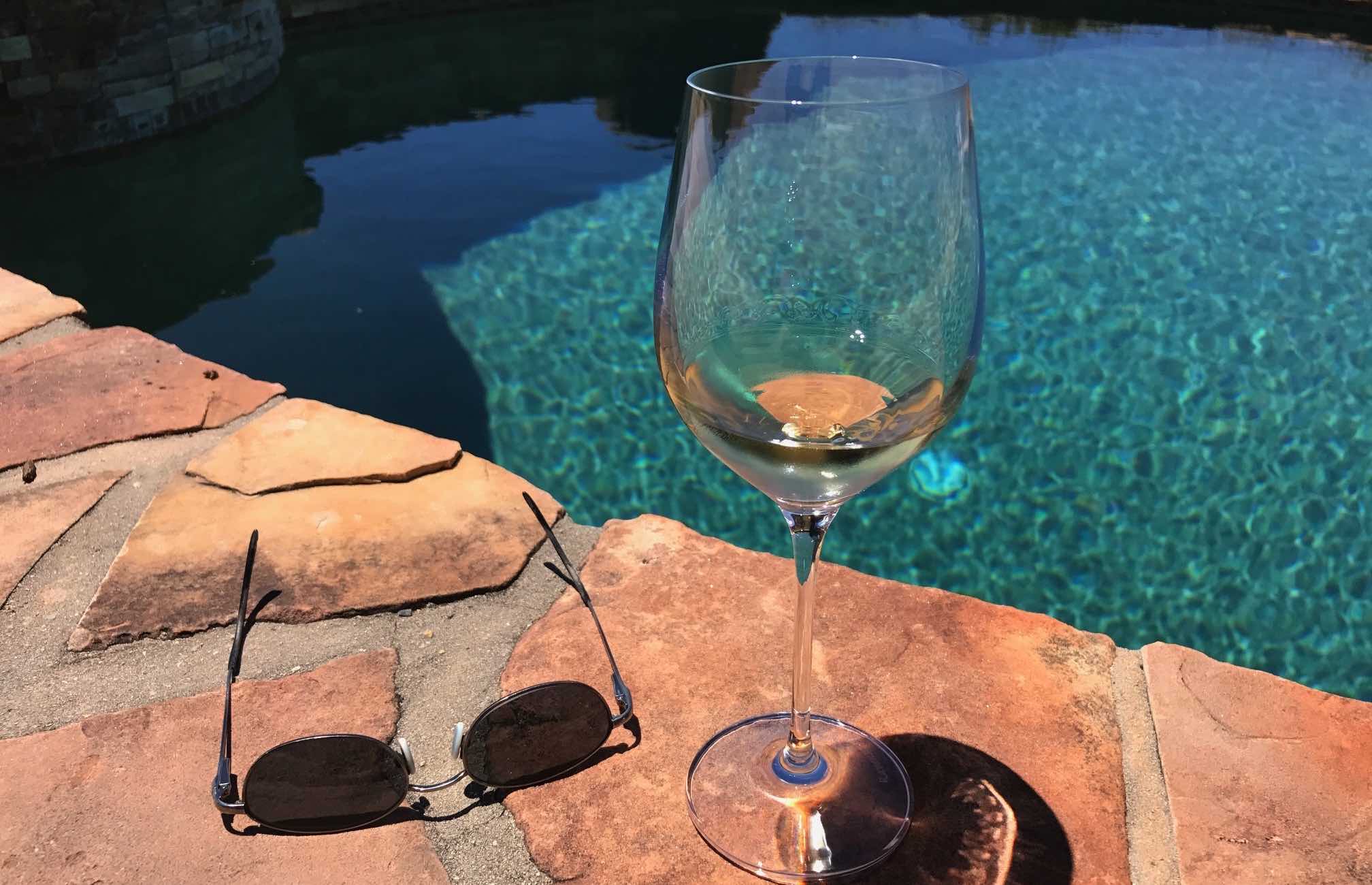
Soon after we moved to the Bay Area in the mid-90s, my wife Kim attended the California Culinary Academy in San Francisco. She’d bring home these enormous textbooks about wine. I was instantly fascinated, and our first trip to Sonoma wine country sealed the deal. We both fell in love with wine.
Today, Kim works at a winery and just became a sommelier. As for me, I just collect and drink the stuff. Here are our favorite summer varietals. Note they’re all white, with two exceptions. Why? Summers are hot and these wines are all served chilled. Duh. (Note the winery tip at the end of some of the varietals).
Rosé. Our favorite summer wine, hands down, Rosé is made from a wide variety of red grapes, from Pinot Noir and Tempranillo to classic Rhône varietals like Grenache, Syrah and Cinsault. Serve chilled, like a white. Winery tip: Bonny Doon Vin Gris de Cigare ($13 give or take).
Pinot Grigio or Pinot Gris. The former is made in Italy, the latter in France, and American versions use either nomenclature. Doesn’t matter. Same grape. Same wine, ranging from medium to full-bodied. Winery tip: J Pinot Gris (about $15).
Italian varietals. Italy has all sorts of other white wine varietals, notably Vermentino, Malvasia, Trebbiano and Verdicchio. They tend to be light-bodied, crisp and food friendly. Awesome by the pool, at the beach or after hours in the Jacuzzi.
Chenin Blanc. One of my favorite varietals, Chenin Blanc is a bit on the sweater side and great with spicy ethnic foods. Winery tip: Dry Creek Vineyard, an American pioneer of Chenin Blanc and my hands-down favorite (about $11).
Torrontés. A white varietal from Argentina, Torrontés is the rarest of wines: inexpensive, hard to find and so worth it. We love love love it, especially with spicy food. Winery tip: Crios is the most widely available (sub-$10 … believe it).
Albariño. Light and acidic, it’s not at all surprising that this Spanish grape is making a name for itself in the U.S. It’s incredibly refreshing on a warm night … or day. Winery tip: Alfaro, where Kim works (shameless plug).
Spanish varietals. Spain is also known for Grenache Blanc, Godello, Pinot Blanco and other whites that are nicely balanced between fruit and acid. Perfect summer wines.
Unoaked Chardonnay. Chardonnay fermented in stainless steel is all the rage on the west coast, particularly Cali’s central coast. More approachable, acidic and food friendly than your standard oaked variety. French Chablis is made essentially the same way. Winery tip: Wright’s Station; if you’re in the Santa Cruz Mountains, check out this hot new burgundy house.
Viognier. When it’s good, Viognier is really good: aromatic and fruit forward. Its Rhône Valley cousins, Rousanne and Marsanne, tend to be full and rich with honey or nutty flavors. Winery tip: Calera Viognier, Qupé Marsanne Rousanne blend.
Dry Riesling. Don’t let the “dry” designation fool you. As with its German / French cousin Gewurztraminer, these are crisp, aromatic wines that are on the sweeter side. As with Chenin Blanc, perfect with ethic foods. A similar but more acidic varietal, Austria’s Grüner Veltliner, is also starting to take off in the U.S.
Sauvignon Blanc. I generally prefer Sancerre from France and New Zealand Sauvignon Blanc to their American counterparts, which tend to be grapefruity and not very food friendly, but some are spectacular. Serve with citrus-flavored foods. Winery tip: Franck Millet Sancerre (sub-$20), Cloudy Bay from New Zealand.
Champagne or sparkling wine. Love a good Brut Rosé, but they tend to be a bit pricey. Winery tip: Roederer Estate Brut Rosé (usually sub-$30).
Gamay or Beaujolais. Light reds that are low in tannins and high in acid, can be served chilled. Wine expert Karen MacNeil called it “the only white wine that happens to be red” in The Wine Bible.
Drink up and chill out, baby.